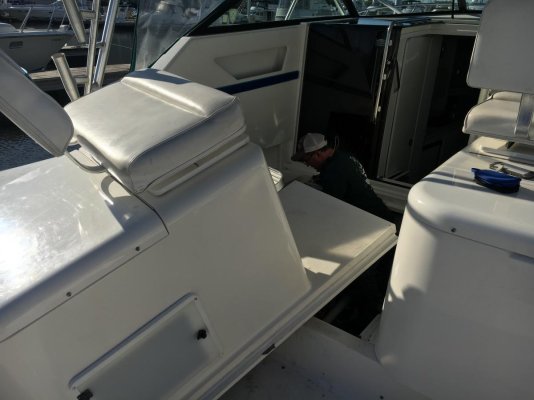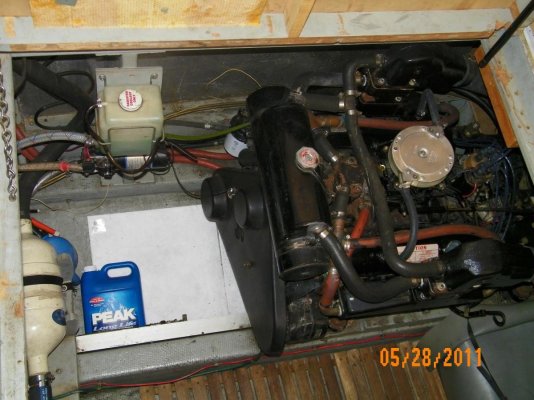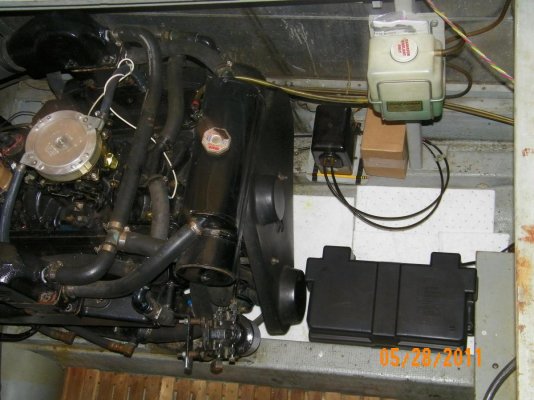LarryM
Guru
- Joined
- Aug 5, 2011
- Messages
- 1,069
- Location
- USA
- Vessel Name
- Pelago
- Vessel Make
- Wellcraft 3300 Coastal
IMHO [and I am quite a bit prejudiced on the + side]... The one and only drawback of a FB is the effort and time it takes to go below and check the engine compartment while under way. Otherwise, I feel FBs are simply great!
Yea, about that engine compartment check, it is easier on some boats than others . . .

Underway, I rely upon complete instrumentation and redundant alarm systems to monitor just about everything that can be monitored. The hatches between the engine boxes do permit viewing/sniffing the engines, the bilges and fuel filtering/valving, but the outboard sides of either engine are simply not accessible without lifting the boxes.
If anything goes wrong, I shut down, hopefully before any damage occurs, and rely on the working engine. In the event of a total failure, TowBoat US or SeaTow are my only options. Thankfully, my boating is now mostly local day-cruising or short overnights where services are readily available.
If I frequented more remote locations or was cruising, I would not have an express cruiser. I would want a boat where I could perform regular and frequent visual/physical inspections of all critical systems.







 when I was looking for a new boat, I did not want any more flying bridge. each with their own values and aspirations, a good thing that there are a variety of boat. or is there I have a rubber boat on the roof and a small command center, if necessary,
when I was looking for a new boat, I did not want any more flying bridge. each with their own values and aspirations, a good thing that there are a variety of boat. or is there I have a rubber boat on the roof and a small command center, if necessary,